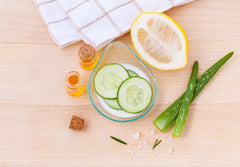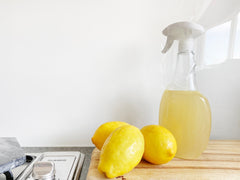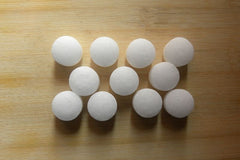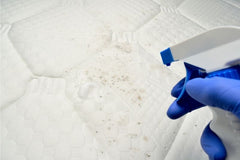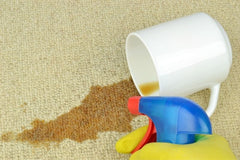How To Make Non-Toxic Laundry Detergent

Learning how to make non-toxic laundry detergent is a great way to keep residue out of pipes, protect the local water supply, save money, and shelter your skin and body from harmful chemicals. Most people opt for commercial cleaning products because they don’t have time or they don’t know how to make their own. The great news is this DIY laundry detergent is ready in just a few minutes and the recipe has only four easy steps.
Why Make Your Own Laundry Detergent?
Commercial laundry detergent is for sure convenient. However, if you check the label, you may notice that some of the chemicals listed there are harmful, especially for people with sensitive skin or allergies.
Sure, you may think that rinsing the clothes will get rid of the problematic chemicals but these chemicals go into the fabric and then they get transferred to the skin, irritating it or entering the body. Thus, it is best to avoid commercial laundry detergent altogether and make your own.
The laundry detergent recipe we love uses natural ingredients that are more gentle to the skin. Not only that but making the detergent helps you save money, as the ingredients cost far less than laundry detergent. In fact, making laundry detergent for 100 loads of laundry costs less than $10.
And before discussing the recipe we also have to mention that making this DIY laundry detergent takes no more than 5 minutes. Sounds amazing, right? Then check the recipe below.
DIY Liquid Laundry Detergent Recipe
This homemade laundry detergent is non-toxic but highly efficient and can remove stains. Making laundry detergent takes less than a trip to the grocery store. Additionally, the homemade liquid laundry detergent is also cost-efficient and tough on dirt.
Tools
Gallon jug
Ingredients
- 1 cup of baking soda;
- 1/3 cup of sea salt;
- 2 1/2 cups of warm water;
- 1 cup of liquid castile soap;
- Water as needed to fill a gallon jug.
Instructions
- Add the baking soda, sea salt, and the warm water to the gallon jug.
- Shake the jug until the salt and baking soda dissolve.
- Add the castile soap and fill the gallon jug with water.
- Move the jug gently to mix.
How To Use Homemade Laundry Detergent
If you have a traditional washing machine, use half a cup or a full cup of laundry detergent, depending on the size of the load.
For high-efficiency washing machines, we recommend using only ¼ per regular load and ½ cup if you want to wash more clothes in one load.
How To Make Castile Soap
While there is nothing wrong with purchasing castile soap for DIY cleaning products, you can also make your own. Granted, the process is not very easy and you have to be careful with the ingredients and the necessary steps but if you love experimenting with DIY recipes, you can definitely give it a try.
Tools
- Large crockpot;
- Immersion blender;
- Digital scale;
- Safety gloves and goggles;
- Stainless steel bowl;
- Stainless steel spoon;
- Silicone spatula.
Ingredients
- 25 ounces of olive oil
- 17 ounces of coconut oil
- 10 ounces of potassium hydroxide lye flakes
- 4 cups of distilled water (for the lye solution)
- 10 to 12 cups of distilled water (to dilute)
Instructions
- Place the crockpot on high heat.
- Add the olive oil in the crockpot to warm.
- In the meantime, measure the potassium hydroxide lye flakes. For this step, use gloves and safety goggles and measure carefully.
- Place the potassium hydroxide lye flakes in the stainless steel bowl.
- Add the distilled water measured for the lye solution over the lye flakes.
- Stir with the spoon until the lye flakes dissolve.
- When the oils are warm, pour the lye solution over the oils in the crockpot. Do it carefully to avoid spillage.
- Leave the crockpot on high and use the immersion blender to blend the mixture of oil and lye solution together. Blend for 5 minutes or until the mixture looks opaque and begins to slightly thicken.
- Blend every 5 minutes during the first 30 minutes. The mixture will get thicker and thicker after every blend. After 30 minutes the soap paste should have the consistency of cake icing.
- Once it reaches the desired consistency, place the lid on the crockpot and cook the mixture for 3 hours.
- Every 30 minute remove the lid and stir the mixture with a spatula so the soap paste cooks evenly.
- After 3 hours the soap solution should be transparent and with a gel consistency.
- Add the distilled water measured for dilution in the crockpot.
- Break the soap paste into the water.
- Place the lid on the crockpot again and reduce the heat to warm for 8 hours or overnight.
- After 8 hours, if you still notice chunks, add a cup of distilled water to continue diluting the paste.
- When the soap is fully dissolved, transfer it into a jug.
Extra tip – if it’s your first time making liquid castile soap, do a clarity test before diluting the soap.
To do the test, measure an ounce of soap paste and mix it with hot water into a small bowl. Stir with a spoon until the soap paste completely dissolves. Wait until the diluted soap cools completely and then look at the bowl. If the liquid soap is clear, proceed with dilution as recommended above. If the diluted soap is opaque or if you notice oils floating to the surface, continue to cook the soap paste for another hour or two. Repeat the test.




